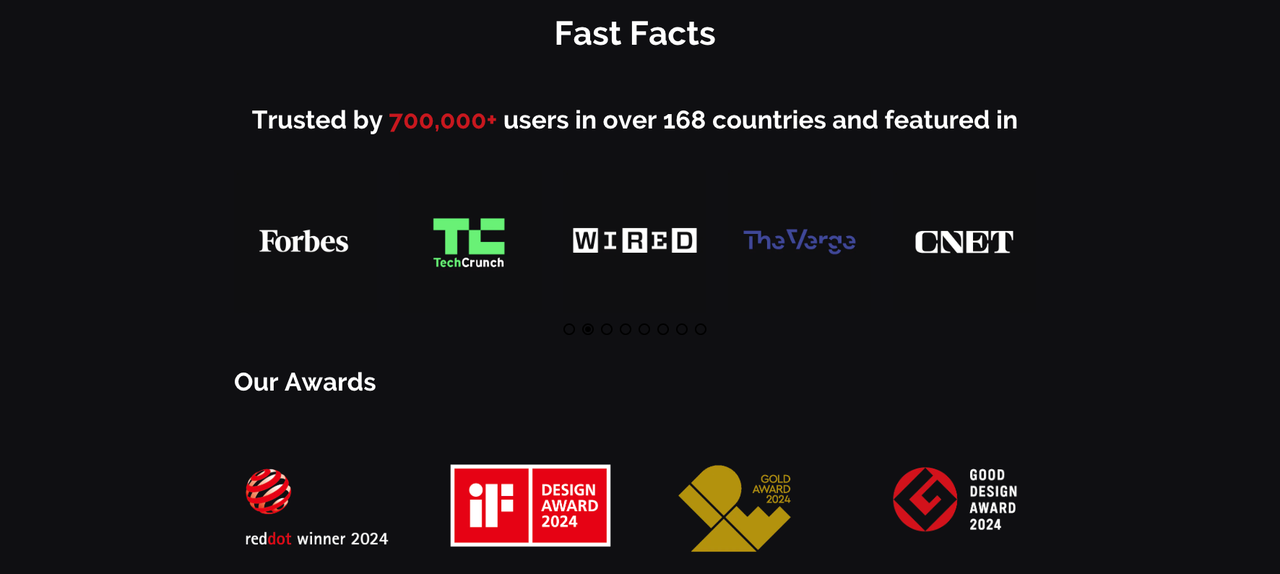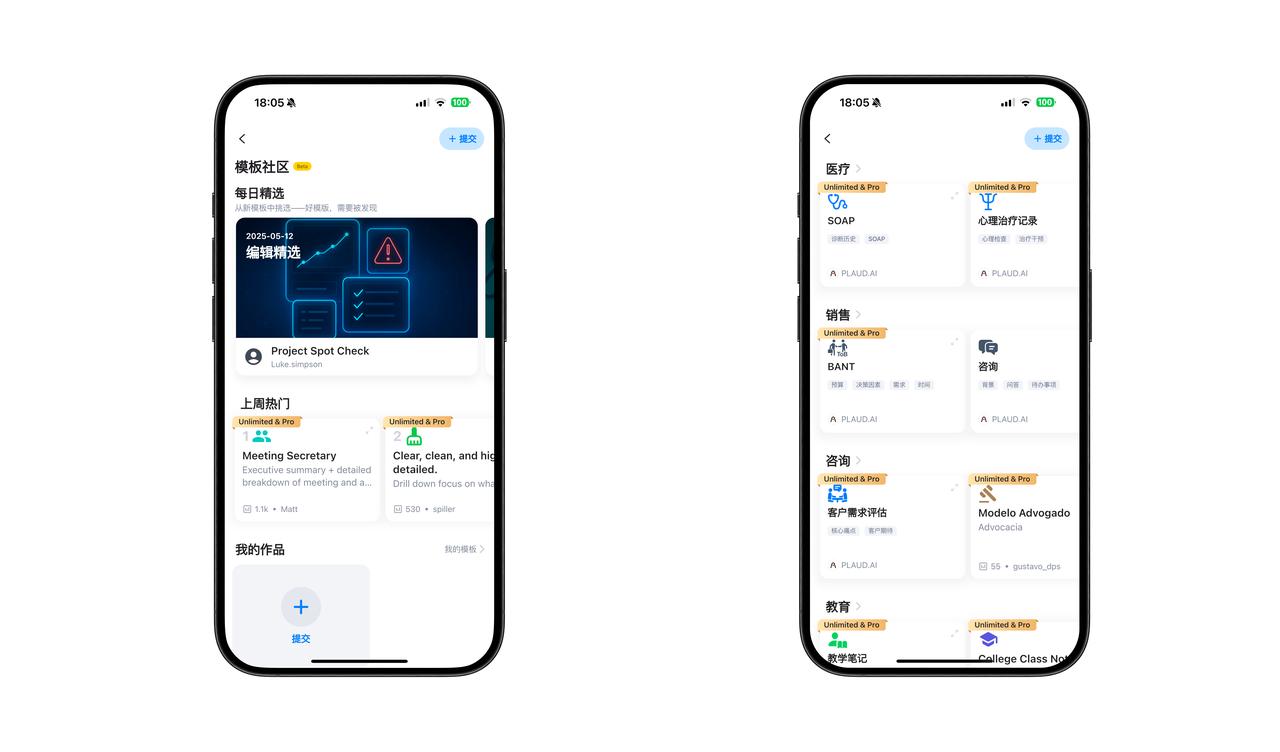Introduction
In 2023, PLAUD NOTE made its first appearance on a crowdfunding platform—and instantly stood out as the world’s first AI recorder powered by ChatGPT. With innovative hardware design and powerful AI capabilities, it quickly captured global attention.
During pre-sales alone, it brought in nearly $6 million and gained 35,000 paying members, rapidly becoming a breakout hit in the AI hardware world.

The buzz didn’t stop there—
In less than two years, PLAUD had amassed 700,000 users across 168 countries, featured in top global tech media, and picked up major international design awards like the Red Dot, iF, and Good Design.
In 2024, revenue had soared past $70 million, the team size had doubled, and the company hit 10x growth two years in a row.
But as sales exploded and users kept pouring in, a tough question surfaced:
Was the internal system strong enough to keep up with this rocket-speed growth?
Beyond a Voice Recorder
Most people know PLAUD for its ultra-slim, card-sized recorder—PLAUD NOTE.
But PLAUD NOTE isn’t your typical voice recorder. Once the recording is done, it automatically transcribes the audio, summarizes it, and even drafts publish-ready content using AI.
For content creators, it’s more than a device—it’s an AI-powered writing companion you can carry anywhere.
What powers this hardware is a constantly evolving software platform. Within the PLAUD app, there’s a growing community where users can upload, edit, and share transcription templates tailored for different fields—like law, healthcare, and education—making it easier for everyone to work with voice content.
The hardware is just the starting point. What truly sets PLAUD apart is the platform behind it—designed to help content flow and grow through user collaboration.
How to Quickly Build Systems from Scratch?
As demand surged, PLAUD’s internal needs became more complex.
The support team needed quick access to user data and tools to resolve account issues.
The operations team wanted better ways to manage app content and oversee community templates.
But back then, none of that infrastructure existed.
“We didn’t have any of it—only when needs kept piling up did we start figuring out how to support them,” said Lucas, PLAUD’s Product Manager.
While PLAUD’s product and engineering teams are world-class, their focus was squarely on innovation. Rebuilding internal systems wasn’t the priority—yet support and ops directly impact user experience, and couldn’t be left behind.
So instead of relying on rigid SaaS tools, PLAUD chose a different path: they used the open-source no-code platform NocoBase to build a system tailored to their needs.
They weren’t specifically searching for a “no-code tool.” It’s simply that NocoBase perfectly addressed their three core requirements.
- Zero to launch fast: No legacy burden, just build what’s needed
- Flexible by design: Fully customizable data models and logic, no vendor lock-in
- Product-first: Owned by the product team, with minimal dev support
In just a few days, the team had a working system—and they’ve been improving it ever since.
One Platform, Two Core Systems
So far, PLAUD has used NocoBase to build two key systems. One serves their customer service team, and the other supports their operations team.
Customer Service System: Centralized User Info
PLAUD’s customer service backend is mainly used to:
- Look up basic user information and how they signed up.
- Check account status and what benefits they’ve purchased.
- Perform backend actions, like changing statuses or flagging records.
The system connects to the company’s main database using an external data source plugin. It links data across different tables. This allows customer service staff to find and manage information all in one place within NocoBase, significantly boosting their efficiency.
“We can now find all our user information right in the system. The data connects directly using SQL.”
– Lucas, Product Manager at PLAUD
Operations System: Managing Template Community Content
For operations, the team built a review system for their template community using NocoBase. This system manages user-submitted content templates, like voice-to-text templates for areas such as healthcare, sales, law, and education.
The system supports:
- Automatic intake of template content.
- Setting up review workflows and managing their statuses.
- Automatically publishing approved templates to the app community.
The entire setup needed very little developer input. It was mostly configured by the product team. A few plugins and some technical help were only brought in for complex data tasks, like JSON conversion.
Just two people, and the whole system ran smoothly
When the PLAUD team talks about NocoBase, three words come up again and again: flexible, efficient, and in control.
The entire customer support and operations system was built mainly by the product manager, with only occasional help from developers for API connections or plugin tweaks.
This setup took the pressure off the dev team and let the product vision take shape faster, with quicker iteration cycles.
“NocoBase is used across the whole company, but the actual setup? Just me and one colleague. The devs stepped in only when we needed to hook up interfaces.”
— Lucas, Product Manager at PLAUD
What stood out most was NocoBase’s powerful data modeling.
PLAUD’s business logic involves complex relationships across multiple tables, along with strict access control.
Thanks to NocoBase’s model-driven structure, they could flexibly define fields, set up relational logic, and easily link data across modules—making the whole system much more usable.
“We needed lots of table relationships, and NocoBase really nailed that part.”
— Lucas, Product Manager at PLAUD
And with its plugin-based architecture, NocoBase also gave the team a solid foundation for future expansion—on their terms.
From viral hit to lasting success
In under two years, PLAUD went from making waves with its debut product to running a full-fledged platform. Just last year, they launched NotePin—a next-gen wearable AI recorder.

But behind this rapid evolution wasn’t just cutting-edge hardware or powerful models. What really made the difference was PLAUD’s sharp judgment and speed in building the right systems.
They didn’t pour money into heavy SaaS solutions or build a massive dev team. Instead, they took a leaner, more self-directed approach—building a custom operations and support platform with open-source tools that fit their business like a glove.
At the heart of it all is a key capability: being able to create a flexible, controllable system with minimal resources—so the team can stay agile even as things move fast.
Looking ahead, NocoBase will continue to support PLAUD on its journey—unlocking even more possibilities where software meets hardware.
Related reading:
- Beyond Spreadsheets: Classmethod’s Employee Data Management with NocoBase
- How One Furniture Factory Built Its Own ERP—No Coding Needed
- From Designer to Builder: L&A’s Digital Transformation with NocoBase
- How KIGLAND Scaled Custom Anime Mask Production with Open-Source Tools
- How a 400+ Lawyer Firm Streamlines Commission Management with NocoBase
- Rapid Development with NocoBase: Driving Digital Transformation in Construction


